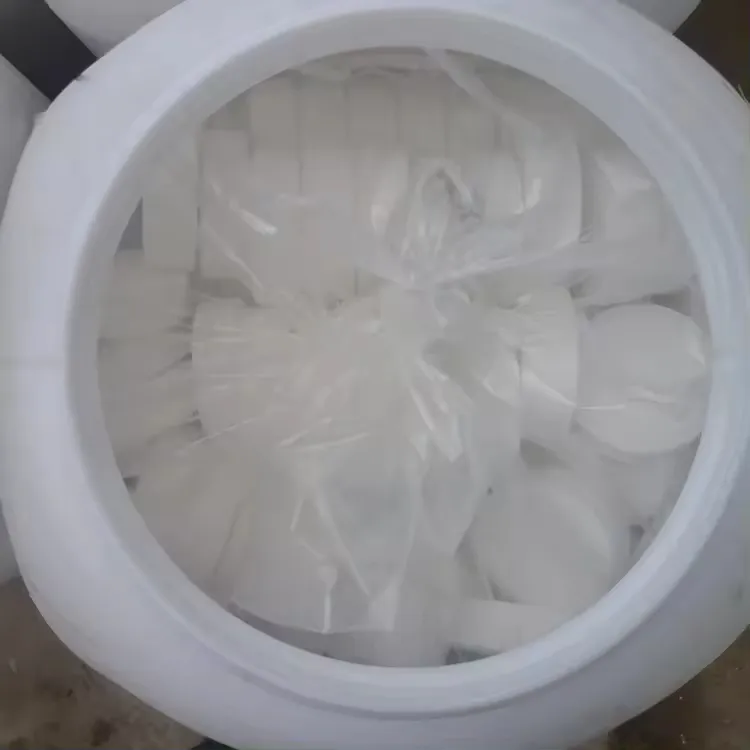



polyelectrolyte in water treatment
Polyelectrolytes in Water Treatment Enhancing Efficiency and Sustainability
Water treatment is a critical component in managing the world's natural resources and is essential in providing clean and safe water for both human consumption and industrial use. Among the various methodologies employed in water treatment, the use of polyelectrolytes has gained significant attention due to their unique properties and effectiveness. This article examines the role of polyelectrolytes in water treatment, their mechanisms, types, and the benefits they offer.
Understanding Polyelectrolytes
Polyelectrolytes are macromolecules that carry charged groups along their polymer chains. They can be classified into two main categories anionic (negatively charged) and cationic (positively charged) polyelectrolytes. Their ionic nature allows them to interact effectively with oppositely charged particles in water, making them particularly useful in various stages of water treatment processes.
Mechanisms of Action
The primary mechanisms by which polyelectrolytes function in water treatment include flocculation, coagulation, and sedimentation. When added to water, polyelectrolytes can promote the aggregation of suspended particles through a process known as flocculation. The charged sites on the polyelectrolytes neutralize the charge of the suspended particles, allowing them to come together and form larger aggregates, or flocs. These flocs are heavier than water and can settle out of the solution, making it easier to remove impurities.
In addition to flocculation, polyelectrolytes can also aid in coagulation—the process where smaller particles combine to form a larger mass. Coagulation is critical in removing turbidity and pathogens from water, ensuring its safety for consumption.
Types of Polyelectrolytes
Various types of polyelectrolytes are utilized in water treatment, including synthetic and natural options. Synthetic polyelectrolytes are often designed to target specific contaminants and can be tailored based on their charge density, molecular weight, and hydrophobicity. Common examples include polyacrylamide and polyethyleneimine, which are widely used in industrial applications.
On the other hand, natural polyelectrolytes such as chitosan and alginate are derived from biological sources and have gained popularity due to their biodegradability and lower environmental impact
. They can effectively remove organic matter, heavy metals, and other pollutants, providing an eco-friendly alternative to synthetic polymers.polyelectrolyte in water treatment

Advantages of Using Polyelectrolytes
The incorporation of polyelectrolytes in water treatment processes offers numerous advantages
1. Efficiency Polyelectrolytes can significantly enhance the removal of suspended solids, colloids, and organic compounds, improving the overall efficiency of treatment operations.
2. Reduced Chemical Usage By facilitating coagulation and flocculation, polyelectrolytes can reduce the need for additional chemical coagulants, leading to lower operational costs and reduced chemical waste.
3. Versatility They can be used across various water treatment applications, including drinking water treatment, wastewater treatment, and sludge dewatering. This versatility makes them suitable for diverse industries such as municipal, agricultural, and industrial sectors.
4. Improved Water Quality The use of polyelectrolytes not only clarifies water but also enhances its quality by removing contaminants and pathogens, making it safer for consumption and use.
Challenges and Considerations
Despite their advantages, the use of polyelectrolytes is not without challenges. The selection of the appropriate polyelectrolyte requires careful consideration of factors such as water chemistry, the nature of contaminants, and specific treatment goals. Additionally, excessive use of polyelectrolytes can lead to residuals in treated water, necessitating proper management and compliance with regulatory standards.
Conclusion
Polyelectrolytes have emerged as a vital component in modern water treatment technologies, providing efficient solutions for clarifying and purifying water. Their ability to enhance coagulation and flocculation processes not only improves water quality but also contributes to more sustainable and cost-effective treatment practices. As the demand for clean water increases globally, the continued research and development of polyelectrolytes will play an essential role in meeting future water treatment challenges, ensuring access to safe water for all.
-
Why Sodium Persulfate Is Everywhere NowNewsJul.07,2025
-
Why Polyacrylamide Is in High DemandNewsJul.07,2025
-
Understanding Paint Chemicals and Their ApplicationsNewsJul.07,2025
-
Smart Use Of Mining ChemicalsNewsJul.07,2025
-
Practical Uses of Potassium MonopersulfateNewsJul.07,2025
-
Agrochemicals In Real FarmingNewsJul.07,2025
-
Sodium Chlorite Hot UsesNewsJul.01,2025










